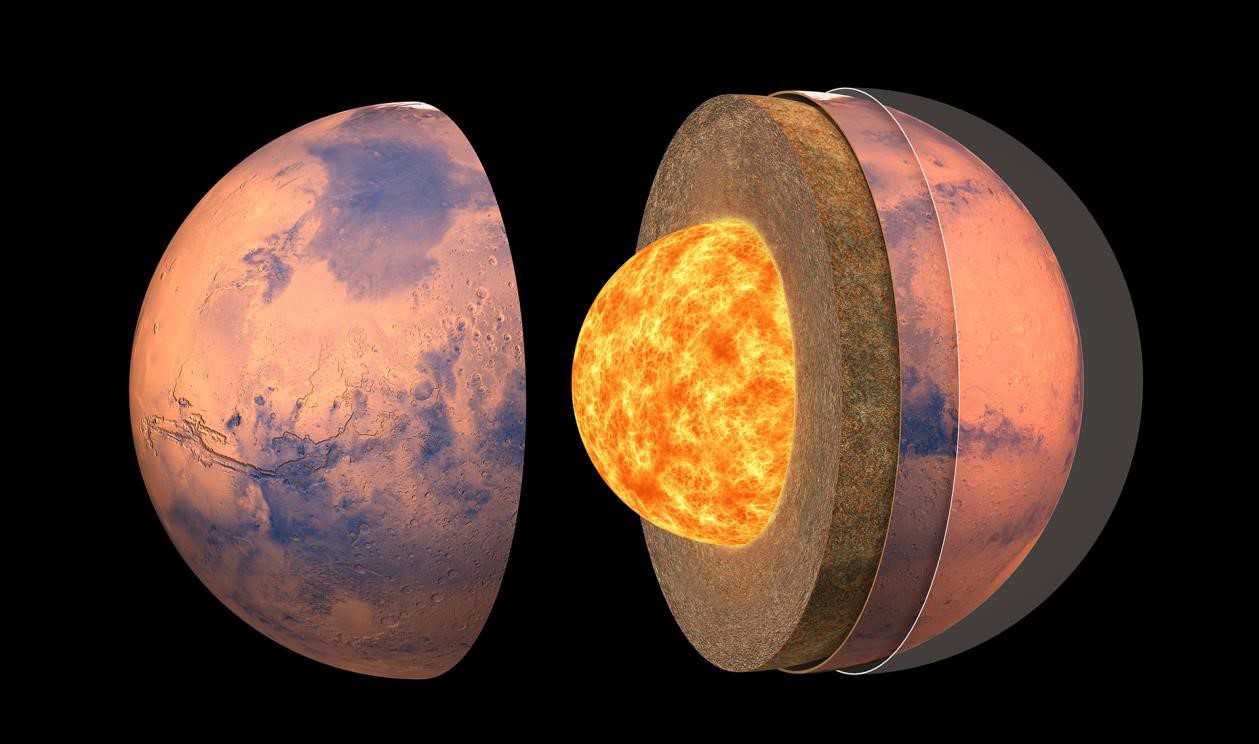The internal structure of Mars has been determined for the first time, and the earthquakes detected by NASA’s spacecraft, InSight, have helped scientists decipher the red planet’s anatomy, estimate the size of its liquid metal core, the thickness of its crust, and the nature of its mantle. .
The discoveries presented in the scientific journal Science provided some surprises, for example, confirmed it The center of Mars melted.
InSight’s Martian team arrived at the planet in 2018 to study the interior of Mars. He detected more than 700 earthquakes, most of which were relatively weak. The waves produced by earthquakes vary in speed and shape depending on the materials they pass inside the planet.
The amount of data collected by the InSight seismometer about thirty earthquakes made it possible to study the interior of the planet.
The greatest significance of the discoveries is that for the first time we have been able to make real measurements of the dimensions and dimensions of the building blocks of Mars. So far, we only have comparisons with the Earth, theoretical calculations and indirect conclusions from other observations.” said Bruce Banerdt, a senior fellow at the Jet Propulsion Laboratory, NASA’s Planetary Research Institute.
Mars’ core, the deepest geological layer, has been measured to be larger than previously thought, with a diameter of about 3,660 kilometers.
Accordingly, the core, which consists mostly of iron and nickel, is less dense and contains a surprisingly high content of lighter elements such as sulfur, oxygen, carbon and hydrogen.

The crust of Mars, which is the outer layer, is completely different from the geological point of view of the Earth. The crust of our planet is cut into huge plates that move on the mantle, the rocky inner layer – this process is plate tectonics.
Since there are no such active tectonic plates on Mars, they bear no resemblance. It also means that the crust of Mars is very old.” said seismologist Brigitte Knappmayr Andron, fellow at the University of Cologne, and lead author of one of three studies published on the internal structure of Mars.
The average global bark thickness is 24-72 km. There are significant differences in each region, with the difference between the thinnest region, the Isidis Impact Basin, and the Tharsis Volcano being around 100 kilometers.

The mantle of Mars extends 1,560 kilometers below the surface.
Its composition differs from that of Earth, indicating that the two planets were formed from different materials when they formed 4.5 billion years ago.
Mars is the fourth planet from the sun, its diameter is 6,791 km and the Earth is 12,755 km.
According to Banerdt, based on the new knowledge, researchers can test theories about the formation of planets.









































